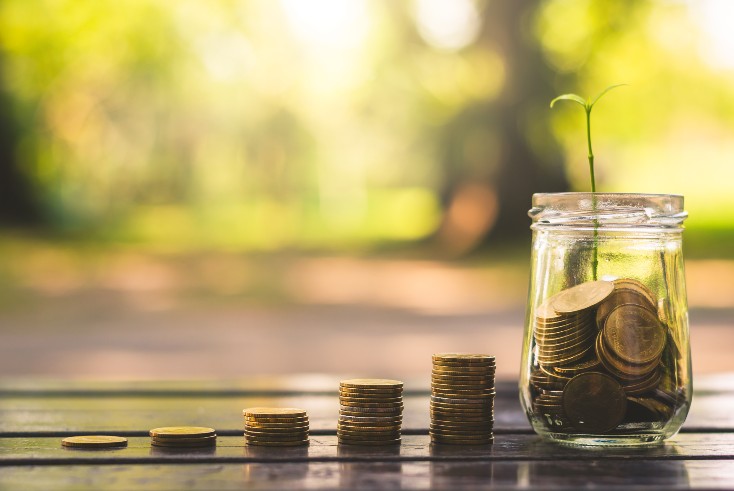The rising cost of ESG inaction is becoming untenable

Opinion
ESG should take precedence when planning for another year of economic uncertainty.
During the pandemic, we all became impressively adept at surviving “unprecedented times”. Fast forward to 2023 and we now find ourselves in “uncertain times” or perhaps “turbulent times” as inflation and interest rates remain high, while consumer confidence remains low.
But the good news is that recessions are not so unprecedented, and we know that in boardrooms across the globe the conversation will be about cutting costs, focusing on the most profitable areas, battening down the hatches and riding out the storm.
With the Advertising Association and Warc predicting ad expenditure in 2023 will fall 3% in “real terms” after the impact of inflation, the coming months will no doubt be tough, and environmental, social, and governance (ESG) efforts are usually one of the first areas people look to cut. But as our industry potentially enters survival mode, social and environmental responsibility is in fact a fundamental element of any good survival strategy. Here’s why.
Tough times require tough action
Traditionally, businesses have been known to invest in social responsibility only when times are good.
During the pandemic, Twitter saw a surge in user growth and so, with the sun shining, the business made plenty of organic, sustainably-sourced hay; investing heavily in “pro-social” programs such as DE&I teams. Conversely, in January of this year, it was reported that Twitter’s daily revenue had slumped by 40%, and among a slew of redundancies, its DE&I resource has been slashed from 30 employees to two.
This, unfortunately, is an all too familiar pattern. But pressure creates diamonds, and the notion that social programs should be the first to go in tough times is frankly out of touch with the consumer experience.
It’s exactly when times are tough that consumers most engage on the issues that matter. We saw how lockdowns across the US were a tinder box for the racial justice movement, as people were glued to their screens, watching and sharing videos of horrific police brutality against Black people across the US.
According to Google Trends, global search interest in “Black Lives Matter” was more than 5 times higher in June 2020 than its previous highest peak in 2016. Society activated around this issue, during perhaps the toughest time in living memory.
Even this year, as the cost of living bites, personal charity donations have still increased by 10.8%. It is innately human to step up and offer a helping hand when it’s most needed.
So when businesses are planning their “survival strategies”, it’s important to remember that these times are going to be just as, if not more difficult for their customers. We’ve seen time and again that when businesses show up for their communities with genuine support, kindness and empathy, these are the brands that truly survive the test of time.
Activism is here to stay
According to recent Mintel research, socially-active consumers now make up two-thirds (66%) of the US population – and brands play a significant role in their advocacy efforts.
For sure, the next few years will be focused on value, as pennies are pinched and luxuries are forgone – but “buying less and buying better” is a narrative that’s starting to gain mainstream traction, thanks to zeitgeist brands like Levi’s.
Meanwhile, businesses that offer channels for “frugal activism” will be rewarded. From washing on a colder cycle with Tide to buying Garnier’s actually quite good shampoo bars; a trend of affordable, civic responsibility will continue to emerge as consumers look to exercise their social values in everyday ways.
In particular, young people are highly engaged, and youth culture today has deeply ingrained social and political ideas. From a TikTok trend causing a revolutionary Iranian song to win Best Song for Social Change at the Grammys, to the near record-high numbers of young people voting in the recent US Midterms – there’s no doubt this is a generation that’s turning up and getting their voices heard.
Pew Research Centre found that Gen Z are 18% more likely to have engaged with content on social media about climate activism vs Gen X, while people aged 18–25 surveyed across 22 different countries indicated that they saw climate change as the most crucial issue the entire world was facing.
Not only are the next generation taking action on climate, they are also the most queer and most racially diverse generation to date. So they will be constructing a more inclusive society — with or without us.
Weathering the storm with a moral compass
The biggest reason social impact programs are axed by corporations is as part of a cost-cutting exercise. But it’s important to note the cost of inaction within this equation; the cost of not cleaning up your mess, not innovating fast enough, or of letting your competitors get the edge.
For instance, corporations are increasingly expected to be accountable for the “end of life” phase of their products. In response, Unilever has publicly committed to collect and process more plastic packaging than they sell – at huge expense to the business.
Fundamentally, sustainable business is just about using resources more efficiently. If you use fewer resources to create, and eventually dispose, of a product, you’ll put less strain on your business and on society.
Already, first-movers in the sustainability space are starting to reap the rewards. In 2015, Apple Inc made an $848m commitment to finance a large solar farm for its data centres. In 2020, the International Energy Agency announced that solar power had become the “cheapest electricity in history”.
In the world of media, streaming company SeenThis was founded 10 years ago on a mission to reduce data waste and speed up the Internet. This innovation has also helped make significant strides towards decarbonising digital advertising. Their technology saves around 7.5% of the CO2e emissions generated by 10 million ad impressions, creating a powerful point of difference in market.
Across the board, innovators that are focused on reducing waste, reducing harm or mitigating their impact are now gaining a significant lead in their sectors.
Similarly, the cost of underinvesting in multicultural or minority groups is mounting. Serving the black consumer is a $300bn opportunity and 69% of African-Americans report being more likely to purchase from a brand whose ads positively reflect their ethnicity.
PepsiCo brand Doritos recently made a huge investment in their diverse consumers through its SOLID BLACK campaign – an ongoing initiative to provide resources and a platform for Black Changemakers. Doritos represents 44.7% of the total chip category, so for their business the cost of not expanding their reach and relevance with underrepresented communities is the cost of a diminishing consumer base.
***
Of course, in stormy seas we do have to steady the ship. We must drop deadweight, increase efficiency, and regain focus. We must survive. But any sailor worth his salt would tell you, even in the choppiest waters, you must never forget to look up and follow your north star.
 Amy Williams is CEO and founder of purpose-powered advertising platform Good-Loop.
Amy Williams is CEO and founder of purpose-powered advertising platform Good-Loop.




